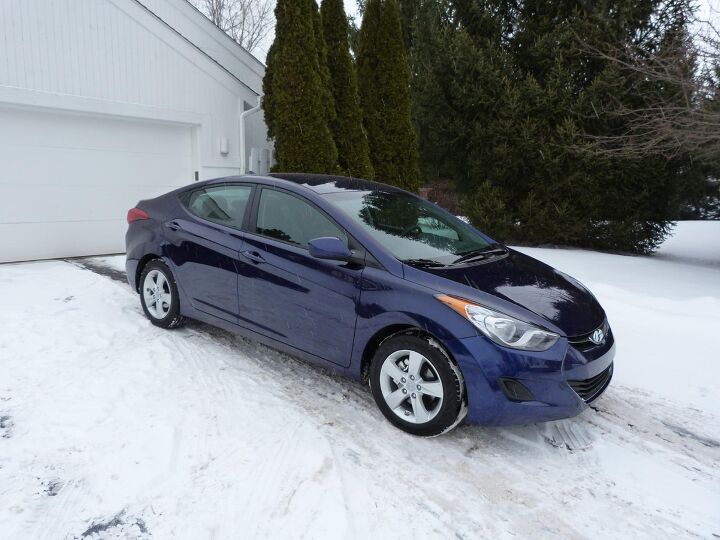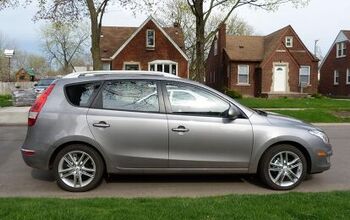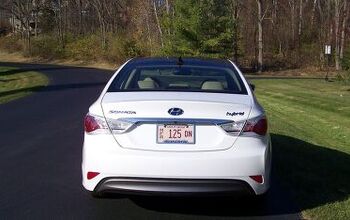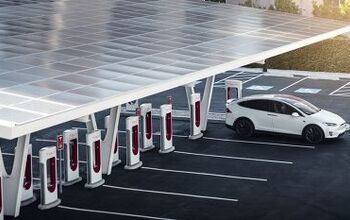Review: 2011 Hyundai Elantra
Auto makers forget at their own peril that competitors are also working on better cars, and that customer expectations are consequently a moving target. When developing a new car, you can’t just aim to be better than today’s leaders. Case in point: the Hyundai Elantra. The 2007-2010 Elantra was so forgettable that I never remembered to drive one. One look at the new 2011 Elantra, on the other hand, suggests that it will upend the compact sedan status quo the way the Sonata has the midsize segment.
The good stuff with the new Elantra begins with its styling. The exterior, Hyundai’s best yet, is a well-executed assemblage of coupe-like curves and creases. Not that we haven’t seen tight proportions and an arched roofline in an affordable compact sedan before—Chrysler shook up the segment with this combination with the first Neon back in 1994. But, even compared to current competitors, such as the Civic it also somewhat resembles, the Hyundai appears both sportier and more upscale.
The new Elantra’s interior is nearly as adventurous and sporty as the exterior, without resorting to the faux tech gimmicky for which Honda has become infamous. There’s a steeply raked windshield but no van-like windowlettes, and the instruments are conventionally arranged. Ergonomics are generally good—there are even two door pulls to choose from—but the HVAC and audio controls are a little too far away to reach without leaning forward.
The interior also doesn’t look or feel as upscale as the exterior. The hard plastic is too obviously hard plastic, the wave-patterned cloth (though interesting to look at) isn’t remotely luxurious, and the car generally feels less substantial than its latest and greatest competitors (though it’s easily a match for the compacts of even a year ago). The cloth front seat cushions feel a touch mushy (they’re firmer with leather) and the front seatbacks provide too little lower back support. The new Chevrolet Cruze and Ford Focus both feel more solid, have higher quality interiors, and are fitted with much better front seats.
The Elantra does lead the Cruze and Focus in rear seat leg room. But don’t let the EPA midsize classification fool you—you’re still clearly sitting in a compact sedan back there. Thanks to the coupe-like roofline, anyone over 5-10 will discover insufficient headroom.
If Hyundai sees fit to again offer an Elantra GT, things could get interesting. Might the Sonata 2.0 turbo fit? For now, only one engine is offered: a 1.8-liter four-cylinder good for 148 horsepower at 6,500 rpm and 131 pound-feet at 4,700 rpm. Decent specs for a 1.8, and acceleration is easily adequate for day-to-day driving, but the 2.4s and 2.5s offered in some competitors and even the Kia Forte are in a different league for anyone seeking thrills. The 1.8 is smooth and nearly silent at idle, but sounds increasingly buzzy as it revs. The transmission generally behaves well, but sometimes lugs the engine.
Fuel economy was clearly a higher priority than performance. Hyundai stresses that the 1.8 earns EPA ratings of 29/40 with either six-speed transmission, the manual or the automatic, and without resorting to tweaks limited to a special trim level. In suburban driving my observed fuel economy over a roughly ten-mile stretch ranged from 24 to 33 depending on the lightness of my foot and my red light karma. With a light but not hyper-miling foot and a stop every mile or so I observed 26. Slowly accelerating to 55 then driving five miles I observed 45, validating the highway rating. When decelerating you can sometimes feel the alternator cut in—a clutch completely disengages it much of the time.
Then there’s the 2011 Elantra’s handling. The electric-assist power steering provides little in the way of feedback and often feels artificial. Some heaviness on-center disappears when the wheel is turned. The chassis is nicely balanced and leans little in hard turns, but the suspension is underdamped and bounds over uneven expansion joints. The suspension geometry seems good, but the springs and shocks clearly need another round or two of sorting. Though the standard stability control performs far better than that in recent Kias, with much less obtrusive interventions, it still cuts in far too early in hard turns on dry pavement. Turn it off and handling remains safe.
The ill-sorted suspension tuning also affects the ride. Over all but smooth roads the Elantra’s constant bobbling about quickly proves tiresome. Not that the ride is harsh—it’s not—just busy busy busy. Aside from the engine when revved, noise levels are low for an affordable compact sedan.
How affordable is it? The tested Elantra GLS with Preferred Equipment Package lists for $18,445. A Honda Civic EX, with virtually the same level of content, lists for $2.700 more according to TrueDelta.com’s car price comparison tool. A similarly equipped Chevrolet Cruze LT? About $1,500 more before adjusting for remaining feature differences, and about $900 more afterwards. And the 2012 Ford Focus SEL? About $2,550 more before adjusting for remaining feature differences, and about $1,100 more afterwards. Compare invoice prices, though, and the Hyundai’s price advantage shrinks—to only about $500 in the case of the Ford.
Even a year ago the new Hyundai Elantra might have been the compact sedan to beat for the non-enthusiast buyer. But Chevrolet’s and Ford’s latest entries into the segment substantially raise the bar for materials, refinement, and seating. Hyundai has been moving fast, but for once Detroit (or, to be precise, its overseas operations) has moved faster. Hyundai promises to keep revising its products more frequently than other manufacturers do. The new Elantra provides a very good foundation for the next revision.
Hyundai provided the vehicle, insurance and one tank of gas for this review
Michael Karesh owns and operates TrueDelta, an online source of automotive pricing and reliability data
Michael Karesh lives in West Bloomfield, Michigan, with his wife and three children. In 2003 he received a Ph.D. from the University of Chicago. While in Chicago he worked at the National Opinion Research Center, a leader in the field of survey research. For his doctoral thesis, he spent a year-and-a-half inside an automaker studying how and how well it understood consumers when developing new products. While pursuing the degree he taught consumer behavior and product development at Oakland University. Since 1999, he has contributed auto reviews to Epinions, where he is currently one of two people in charge of the autos section. Since earning the degree he has continued to care for his children (school, gymnastics, tae-kwan-do...) and write reviews for Epinions and, more recently, The Truth About Cars while developing TrueDelta, a vehicle reliability and price comparison site.
More by Michael Karesh
Latest Car Reviews
Read moreLatest Product Reviews
Read moreRecent Comments
- Dale Had one. The only car I ever bought because of a review in a guitar magazine.Sure was roomy inside for such a small car. Super practical. Not much fun to drive even with a manual.Sent it to college with my stepson where it got sideswiped. Later he traded it in on an F-150.
- Bd2 Hyundai's designs are indeed among the most innovative and their battery technologies should allow class leading fuel consumption. Smartstream hybrids are extremely reliable.
- 28-Cars-Later So now H/K motors will last longer in between scheduled replacements. Wow, actual progress.
- AZFelix I have always wondered if the poor ability of Tesla cars in detecting children was due to their using camera only systems. Optical geometry explains that a child half the height of an adult seems to have the same height as that same adult standing twice as far away from the viewer.
- 28-Cars-Later Actually pretty appealing (apparently I'm doing this now). On a similar note, a friend of mine had a difficult situation with a tenant which led to eviction and apparently the tenant has abandoned a 2007 Jag S-Type with unknown miles in the garage so he called me for an opinion. Before checking I said $2-3 max, low and behold I'm just that good with the 3.0L clocking in at $2,3 on average (oddly the 4.2 V8 version only pulls $2,9ish) and S-Types after MY05 are supposedly decent.











































Comments
Join the conversation
I rented a bronze Elantra on a recent business trip to Waterloo, Iowa. It was all freeway driving, and I thought the steering was heavy for such a small car. It seemed like it wanted to wander outside the lane as it went down the road. The gas mileage was good, about 35 mpg. Avis called me the second day I had the vehicle, and asked me if I was driving a black Elantra. I told thme mine was bronze. Evidently, someone driven a black Elantra off their lot, and they had no record for it, and they asked if I had seen it.
It's now official- we bought an Elantra GLS with 6-spd manual to keep the '09 Fit company. The Cruze, Focus and Civic just didn't quite measure up.